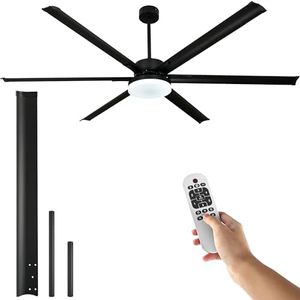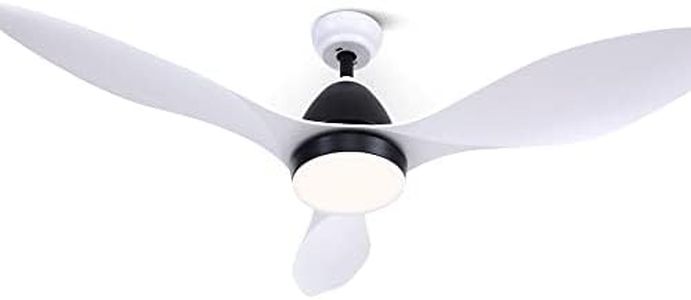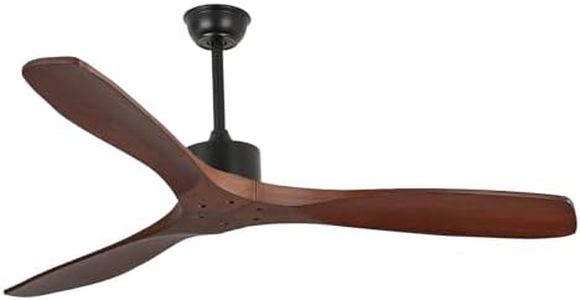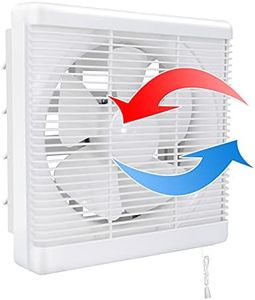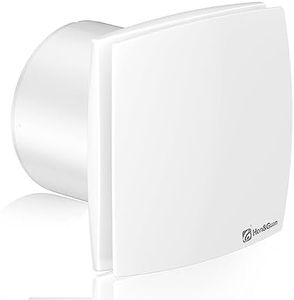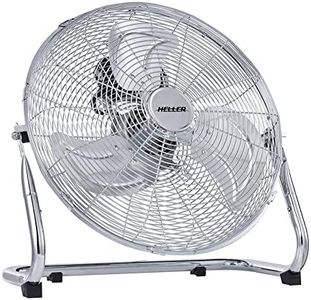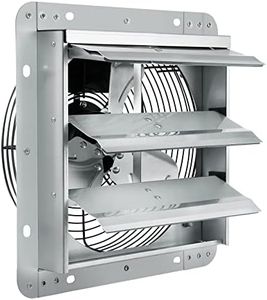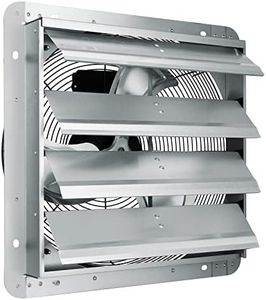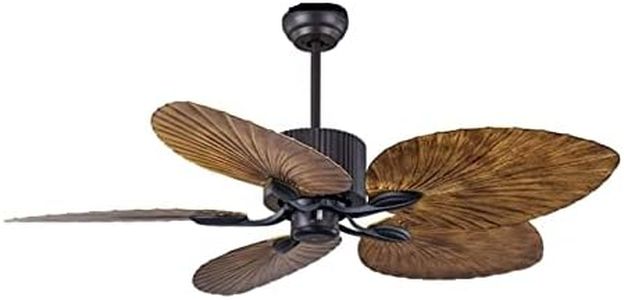We Use CookiesWe use cookies to enhance the security, performance,
functionality and for analytical and promotional activities. By continuing to browse this site you
are agreeing to our privacy policy
10 Best Garage Fans
From leading brands and best sellers available on the web.Buying Guide for the Best Garage Fans
Choosing the best garage fan is all about matching the fan’s capabilities with the size of your garage and how you plan to use the space. Whether you’re working on projects, spending significant time in your garage, or just want to keep it well-ventilated and free of stagnant air, understanding some key features will help you make the right decision. It’s important to consider how powerful the fan needs to be, how much noise you can tolerate, the fan’s type, and how easy it is to use and maintain. By looking at these details, you’ll be better equipped to find a fan that keeps your garage cool, comfortable, and safe.Airflow Capacity (CFM)Airflow capacity, measured in cubic feet per minute (CFM), tells you how much air a fan can move over time. This is crucial because a larger garage needs more air movement to stay cool and fresh. Small garages may need fans with up to 2,000 CFM, medium spaces often do well with 2,000-4,000 CFM, while large garages or workshops might require 4,000 CFM or more. To decide what’s right for you, think about your garage size—more square footage or higher ceilings call for a stronger fan. If you use your garage for heavy work or automotive repairs, opt for a higher CFM to help with fumes and heat.
Type of FanGarage fans come in a few main styles: floor fans, wall-mounted fans, and ceiling-mounted fans. Floor fans are portable and good for directing airflow to specific spots, wall-mounted fans save floor space and are better for constant ventilation, and ceiling fans distribute air more evenly throughout the garage. Choose the type based on your available space and whether you need the fan to be mobile or permanently installed.
Noise LevelNoise level is measured in decibels (dB) and describes how loud the fan will be while operating. This becomes important if you spend lots of time in the garage and want a quiet workspace. Lower values (below 60 dB) are relatively quiet, while 60-70 dB is moderate and above 70 dB can be quite noticeable. Pick a quieter fan if you’re sensitive to sound or use the garage for hobbies, but if you only use it occasionally, noise may be less of an issue.
AdjustabilityThis refers to how much you can control the fan’s speed, direction, and angle. Some fans have only one speed and fixed direction, while others can oscillate, tilt, or have multiple speed settings. More adjustability is useful if you need to direct airflow to different parts of your garage or want to switch between strong cooling and gentle air movement. Think about your tasks and choose a fan with the flexibility you require.
Durability and Build QualityGarage environments can be dusty and sometimes humid, so a rugged, metal construction is often better than lightweight plastic. Fans with sealed motors are best for particularly dusty places. If you spend time on messy projects or have a busy space, pick a fan designed for heavy-duty use so it lasts longer and withstands the elements.
Ease of Installation and MaintenanceConsider how simple it is to set up and maintain the fan. Floor fans are plug-and-play, while wall or ceiling fans may need some installation effort. Also, fans with removable grills or accessible blades are easier to clean. If you want minimal hassle, look for easy-access features and simpler installation methods.

